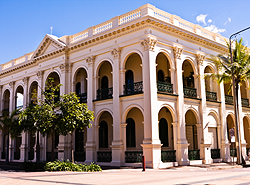
The Disability (Access to Premises Standards – Buildings) 2010 (Premises Standards) and the 2011 version of the Building Code of Australia (BCA) came into force on 1st May 2011 and applies to all new buildings, and new works associated with existing buildings. It includes specific access provisions and references a number of Australian Standards that relate to disability access.
Typically, these access standards are updated versions of the previous access standards, which now have enhanced/additional access provisions. The Premises Standards and the BCA do not have any retrospective triggers to upgrade existing buildings that do not comply with the current access standards. However, if an existing building remains unaltered, it will always be subject to a complaint under the Disability Discrimination Act 1992 (DDA). If upgrade works are undertaken to an existing building that requires building approval, then the Premises Standards requires the ‘new part’ to comply with the relevant access provisions, as well as requiring the ‘affected part’ to be accessible and meet the current access standards.
The ‘affected part’ is defined as the path from the ‘new part’ to the main entrance of the building. 
This is recognised by the Premises Standards, whereby an applicant could claim that compliance will impose an “unjustifiable hardship” and may seek a determination from an Access Panel. The Access Panel process in each State or Territory varies, but the concept is similar as it is based upon the Commonwealth protocol (agreed by all States & Territories) for deciding “unjustifiable hardship“.
The agreed protocols are included in Clause 4.1(3) of the Premises Standards and are also replicated in some State building regulations to facilitate their Access Panel process. The agreed protocols include a number of criteria in determining “unjustifiable hardship”, such as financial hardship, technical limitations (i.e. structural implications, topography, etc.), benefits/losses caused by achieving compliance, heritage considerations, if an Action Plan has been implemented, etc. 
We can assist applicants with this process, as we have the expertise to assess projects against the agreed protocols for “unjustifiable hardship” and can prepare detailed accessibility reports as part of an “unjustifiable hardship” determination to an Access Panel. Also, in States or Territories where Access Panels are yet to be established, we can provide similar detailed accessibility reports for approval by the building certifier/surveyor.